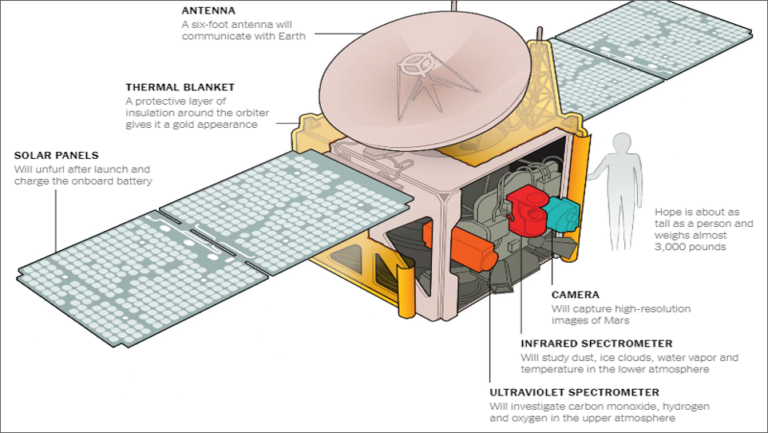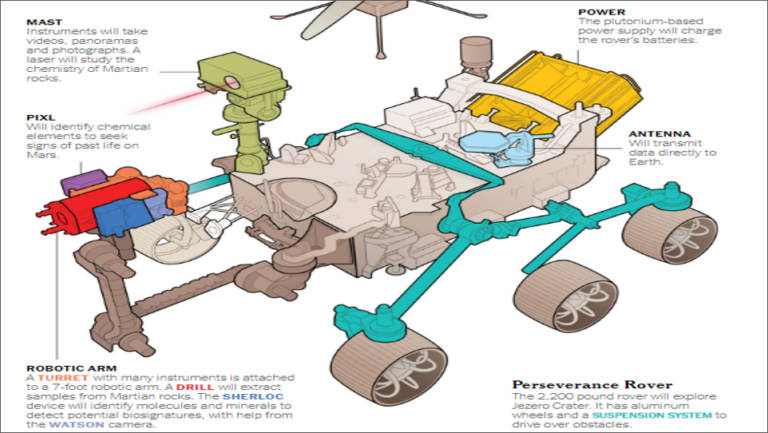Que- For approximately four decades, territorial disputes and ethnic conflict between which two countries in Central Asia have impacted the Nagorno-Karabakh region in the South Caucasus.
- a) Turkey and Armenia
- b) Turkey and Iran
- c) Azerbaijan and Iran
- d) Armenia and Azerbaijan
Ans- (d)
- Recently tensions escalated at the border between the two countries and resulted in the death of at least four Azerbaijani soldiers.
- Following the killings, Armenia and Azerbaijan were engaged in a verbal spat, accusing the other for having instigated the most recent conflict.
- Conflict in the Nagorno-Karabakh region began following the breakdown of the Soviet Union in the late 1980s and lasted till approximately 1994, with both Armenia and Azerbaijan claiming this strategic territory.
- At that time, the enclave of Nagorno-Karabakh had held a referendum boycotted by Azerbaijan where the people chose independence over joining either of the two countries.

Que- On July 11, 25 years on, commemoration services were held at the Srebrenica-Potocari Memorial and Cemetery in remembrance of the victims of the massacre. During this ceremony, bodies of nine victims that were recently identified were buried in the cemetery. In which country all this happened
- a) Bosnia and Herzegovina
- b) Serbia
- c) Kosovo
- d) Montenegro
Ans- (a)
- In July 1995, approximately 8,000 Muslims, mostly men and boys were killed in Srebrenica, a town in Bosnia and Herzegovina in southeastern Europe, by Bosnian Serb forces led by Commander Ratko Mladić. These killings were later classified as genocide by international tribunals investigating the massacre.
- The disintegration of Yugoslavia in 1991 threw the southeastern and central Europe in chaos and led to violent inter-ethinic wars in the region over the next few years. In many ways, the violence perpetrated against Bosniaks or Bosnian Muslims during the Srebrenica massacre was a result of this regional conflict. According to some researchers, this massacre was the worst atrocity against civilians in Europe since the Holocaust.
___________________________________

Kolkata Port to Agartala via Chattogram port
- Union Minister of State for Shipping flagged off the first trial container ship from Kolkata to Agartala through Chattogram Port of Bangladesh.
- This has been done under the Agreement on use of Chattogram and Mongla Ports for movement of India’s transit cargo through Bangladesh.
- It will provide the alternative and shorter route to connect the North East Region through Bangladesh.
- The consignment of the trial movement includes two TEUs carrying TMT steel bars destined for West Tripura district and two TEUs carrying pulses destined for Karimganj, Assam.
- After reaching Chattogram, the consignment will move to Agartala on Bangladeshi trucks.
- It will reduce distance and time taken in transportation of goods for India and is a win-win for both the economies. Job creation, investment in the logistical sector, enhanced business services and revenue generation are advantages that will accrue to Bangladesh. Bangladeshi vessels and trucks will be utilized to move the Indian cargo.
- Under the Protocol on Inland Water Transit and Trade, in addition to the six existing Ports of Call, five more in each country have been added recently.
____________________________

India-Bhutan open new trade route
- India and Bhutan had commenced a new trade route between Jaigaon in Bengal to Pasakha in Bhutan, which will further the camaraderie in bilateral relationships
- It will ease the movement of heavy vehicles from across the border and will provide boost to the infrastructure.
- This new land route for movement of industrial raw materials and goods destined for Pasakha Industrial Estate will boost bilateral trade and commerce and lead to decongestion of vehicular traffic along the Jaigaon-Phuentsholing route.
_____________________________

Azad Pattan
- Recently Pakistan and China signed an agreement for the 700 MW Azad Pattan hydel power project on the Jhelum river in Sudhoti district of Pakistan Occupied Kashmir (PoK).
- It is the second power project under the China Pakistan Economic Corridor (CPEC), for which an agreement has been signed in the last two months.
- The first agreement, for the 1,100 MW Kohala project, was signed on June 23.
- According to the details in the 2017 agreement, the construction of the project, which was first proposed in 2002, will take 69 months, and the project will be commissioned by 2024.
- The project was cleared in June 2016 by the government of PoK through Private Power Infrastructure Board.
- To promote private investment in power projects – which nominated Power Universal Co. Ltd., which is wholly owned and controlled by the China Gezhouba group, a Chinese state-owned multinational corporation, as the main sponsor and initial shareholder.
- Gezhouba set up a special purpose joint venture with the Laraib Group, a Pakistani renewable energy developer. The JV is called Azad Pattan Power Private Ltd Corporation, and it will develop the project on the ‘build, own, operate, transfer’ (BOOT) model. The project will be transferred to the government of Pakistan after 30 years.
___________________________
Ebola cases in DRC province continue to rise
- The Ebola outbreak in Democratic Republic of the Congo’s (DRC) Equateur Province continues to grow: Confirmed cases this time have now surpassed the total number recorded during the province’s last outbreak in 2018.
- The latest outbreak, DRC’s 11th, was declared on 1 June, 2020 after a cluster of cases was detected in Mbandaka area of Equateur Province.
- It was only on June 25, 2020, that the country had declared that the second-deadliest Ebola virus disease outbreak in the eastern area was over.
- The outbreak in eastern DRC began in August 2018, with the last case reported on April 27.
For an outbreak to be officially over, there must be no new cases for 42 days.
______________________
French refinery leaks toxic chemical into marine life area
- An orange-brown chemical sheet spread over 15 acres (6 hectares) of a nationally recognized marine life area in the French Mediterranean following a leak at a petrochemical plant in southern France.
- The leak at the Lavera refinery spilled 200 gallons or more of iron chloride into the sea.
- Contact with iron chloride can harm eyes and mucous membranes, and ingesting it can be fatal.
- The area of the Mediterranean where the chemical ended up is listed on a French inventory as an ecosystem of outstanding natural fauna and flora for its coral and sea life.
___________________________
Vietnam bans imports of wild animals
Vietnam has banned all imports of wild animals, dead or alive, and announced a crackdown on illegal wildlife markets as part of efforts to reduce the risk of future pandemics such as Covid-19.
A directive issued by the country’s prime minister, Nguyen Xuan Phuc, halts the trading of wild species, as well as animal products such as eggs, organs or body parts.
It also calls for tougher action against people involved in illegal hunting, killing or advertising of wild animals.
Vietnam is one of Asia’s biggest consumers of wildlife products, and the country’s trade in wildlife – both illegal and “legal” – is thought to be a billion-dollar industry.
- Among the most frequently smuggled animal goods are tiger parts, rhino horn and pangolins, used in traditional medicine.
- Conservationists have also raised serious concerns over poorly regulated commercial animal farms, where snakes, bears or tigers are reared in tiny cages.
- The United Nations’ biodiversity chief, Elizabeth Maruma Mrema, has called for countries to ban wildlife markets, which are seen by many to be a driver of zoonotic diseases.
- Among the most frequently smuggled animal goods are tiger parts, rhino horn and pangolins, used in traditional medicine.
- Conservationists have also raised serious concerns over poorly regulated commercial animal farms, where snakes, bears or tigers are reared in tiny cages.
- The United Nations’ biodiversity chief, Elizabeth Maruma Mrema, has called for countries to ban wildlife markets, which are seen by many to be a driver of zoonotic diseases.
____________________

‘Green Banana’ Off Florida’s Coast
- Sprinkled across the ocean floor, invisible from the surface, are hundreds — or maybe thousands — of sink holes.
- These “blue holes,” as scientists call them, do not swallow up everything incapable of fighting their gravitational force, like their black hole cousins.
- Recently, one particular blue hole — the Green Banana — has captured the imagination of many a land dweller.
- Green Banana, one of the deepest blue holes ever discovered.
- Scientists will venture into the Green Banana’s depths next month.
- The name emerged in the mid 1970s after a boat captain saw a green banana skin floating by a known “spring,” as fishermen referred to the underwater sink holes back then.
- They were called springs, because in the 1530s, when the Spanish explorer Hernando de Soto was hanging out in the area, there was fresh water streaming out of the holes.
- One reason that so little is known about them, according to the National Oceanic and Atmospheric Administration, is that their entry points are often narrow — before they broaden out — making it impossible for an automated submersible to enter.
- The team recently explored a nearby blue hole, around 350 feet deep, known as “Amberjack.” They were surprised to discover two dead smalltooth sawfish, an endangered species, at the bottom.
_____________________________

Hurricane Hanna
- Texas, which is one of the largest hotspots for Covid-19 in the US, is now facing another threat, as Hurricane Hanna made landfall.
How intense is Hurricane Hanna?
- Hanna reached wind speeds of up to 90 mph. The hurricane is expected to produce heavy rains across portions of southern Texas and northeastern Mexico, which will result in “life-threatening” flash flooding and isolated minor to moderate river flooding.
- There are five categories of tropical cyclones, depending on the wind speeds. Hanna is category one. When winds in the rotating systems reach 39 mph, the storm is called a tropical storm and when they reach 74 mph, the tropical storm can be classified as a tropical cyclone or a hurricane and is also given a name.
- Once tropical cyclones make landfall, they become weaker since they are no longer fed by the heat of the ocean, but before dying out completely, they move far inland dumping inches of rainwater and causing wind damage.
- In May, the National Oceanic and Atmospheric Administration (NOAA) announced that this year, an “above-normal” hurricane season is expected in the US. One reason for this is the warmer-than-average sea surface temperatures in the tropical Atlantic Ocean and the Caribbean Sea, along with weaker tropical Atlantic trade winds and an enhanced west African monsoon.
What are hurricanes and how do they form?
- Tropical cyclones or hurricanes use warm, moist air as fuel and therefore form over warm ocean waters near the equator.
- As NASA describes it, when the warm, moist air rises upward from the surface of the ocean, it creates an area of low air pressure below.
- When this happens, the air from the surrounding areas, which has higher pressure, enters this space, eventually rising when it becomes warm and moist too.
- As the warm and moist air continues to rise, the surrounding air will keep entering the area of low air pressure.
- When the warm air rises and cools off, the water in the air forms clouds and this system of clouds and winds continues to grow and spin, fuelled by the ocean’s heat and the water that evaporates from its surface.
- As such storm systems rotate faster and faster, an eye forms in the centre. Storms that form towards the north of the equator rotate counterclockwise and those that form south of the equator spin clockwise because of the rotation of the Earth on its axis.
How are tropical cyclones named?
- Since 1953, Atlantic tropical storms have been named according to lists by the National Hurricane Center (NHC). In 1978, it was decided that the NHC will use alternating men and women’s names, on the lines of the practice adopted by Australia’s bureau of meteorology three years earlier in 1975.
- These names are maintained and updated by an international committee of the World Meteorological Organisation (WTO). The WTO represents over 120 countries and uses pre-determined lists of names for each ocean basin of the world. Typically, the names should be short and should be readily understood when broadcast.
- There are six such lists of names with 21 names each (each starting with one alphabet except Q, U, X, Y and Z because names beginning with these letters are in short supply) that are used in rotation, which is to say that the list of names attributed to Atlantic tropical storms in 2019 will also be used in 2025.
- However, names of storms that caused particular damage and deaths are retired and in case there are more storms than names in the list, NHC names them using the Greek alphabet. Some of the retired names include Erika (2015), Irma (2017) and Florence (2018) among several others.
- Further, the only time that a storm may be renamed is when it dissipates to a tropical disturbance and reforms.
Why is it important to name tropical cyclones?
- Adopting names for tropical storms makes it easier for people to remember, as opposed to numbers and technical terms. Apart from the general public, it also helps the scientific community, the media, disaster managers etc.
- Experience shows that the use of short, distinctive names in written as well as spoken communications is quicker and less subject to error than the older, more cumbersome latitude-longitude identification methods.
What is the difference between a hurricane and a tropical storm?
- There is no difference.
- Depending on where they occur, hurricanes may be called typhoons or cyclones.
- As per NASA, the scientific name for all these kinds of storms is tropical cyclones.
- The tropical cyclones that form over the Atlantic Ocean or the eastern Pacific Ocean are called hurricanes and the ones that form in the Northwest Pacific are called typhoons.
____________________________________________
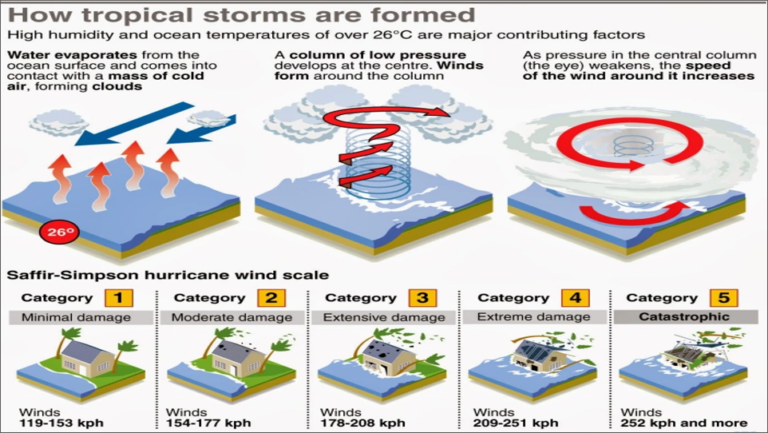

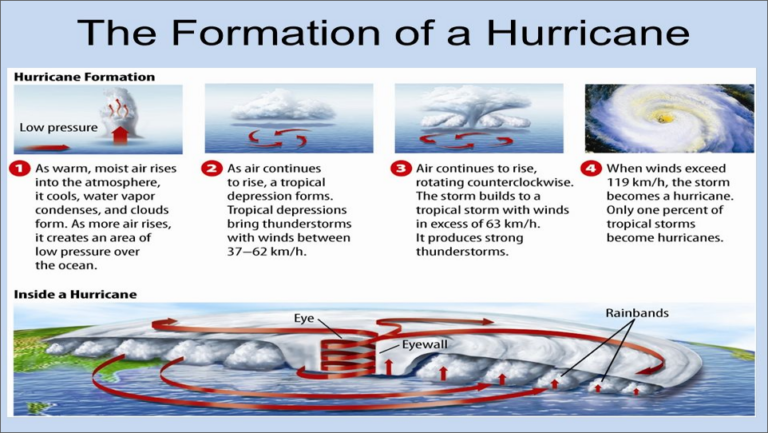
Que- The United States consulate in the which Chinese city was officially closed, amid worsening relations between Beijing and Washington.
- a) Beijing
- b) Shanghai
- c) Tianjin
- d) Chengdu
Ans- (d)
- China had ordered the closure in response to Washington’s order for the Chinese consulate in Houston to be shut, blaming the deterioration of US-China ties on Washington and urging the US to withdraw its decision.
- Tensions between the two countries over trade and the coronavirus reached a new level last week when the US ordered China’s consulate in Texas closed, accusing Beijing of using it as a hub of espionage and intellectual property theft.
- The US has an embassy in Beijing as well as five consulates in mainland China – including the one in Chengdu – plus one in Hong Kong. The Chengdu consulate covered the country’s south-west, including – notably – Tibet, where authorities have overseen a severe crackdown. China’s foreign ministry has called the closure a “legitimate and necessary response to the unreasonable measures by the United States”.
______________________________________

World’s largest nuclear fusion project begins assembly in France
- The world’s largest nuclear fusion project began its five-year assembly phase in southern France, with the first ultra-hot plasma expected to be generated in late 2025.
- The €20bn (£18.2bn) Iter (International Thermonuclear Experimental Reactor) project will replicate the reactions that power the sun and is intended to demonstrate fusion power can be generated on a commercial scale.
- Nuclear fusion promises clean, unlimited power but, despite 60 years of research, it has yet to overcome the technical challenges of harnessing such extreme amounts of energy.
- Nuclear fusion releases vast amounts of energy when heavy hydrogen atoms fuse together, but this requires a temperature of 150m C, 10 times hotter than the core of the sun.
- The hydrogen fuel is obtained from seawater and just a few grammes is needed but huge magnets are needed to contain the plasma in doughnut-shaped vacuum chamber known as a tokamak.
- Like conventional nuclear fission reactors, the process itself does not produce climate-warming carbon dioxide but fusion reactors cannot meltdown and produce much less radioactive waste.
- Among the components being assembled is the 30-metre-diameter cryostat, manufactured by India, which surrounds the reactor and keeps it at the extremely low temperature required.
- One of the electromagnets, called the central solenoid and built by the US, will have the magnetic power to lift an aircraft carrier.
- Other nuclear fusion companies include Tri Alpha Energy, which harnesses particle accelerator technology and is working with Google, General Fusion, which uses a vortex of molten lead and lithium to contain the plasma and is backed by Amazon’s Jeff Bezos and First Light Fusion.
________________________________________
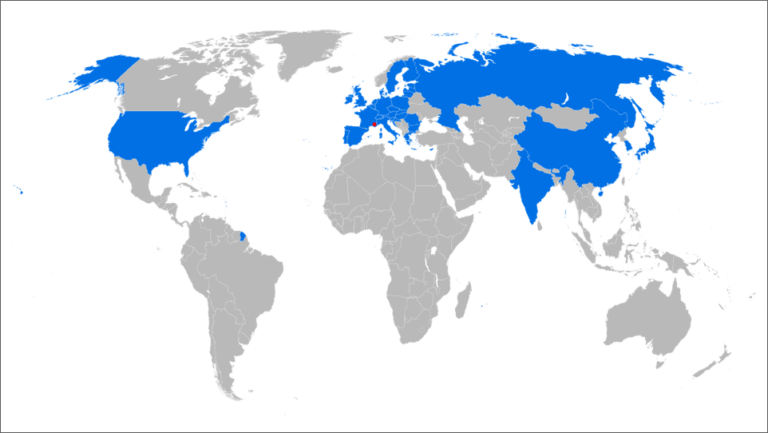
International Thermonuclear Experimental Reactor (ITER)
- The International Thermonuclear Experimental Reactor (ITER), a multi-nation project that aims to replicate energy of the Sun, is a perfect example of the age-old Indian belief ‘Vasudhaiva Kutumbakam, the entire world is working together for the betterment of mankind’, Prime Minister has said.
- The start of assembly of the ITER Tokamak, the world’s largest fusion device, was celebrated at Saint-Paul-Lez-Durance, France.
- The celebration was hosted virtually by President Emmanuel Macron.
- ITER Organisation (IO) is the central team responsible for construction at the site and operation, while the ITER partners created their own domestic agencies to deliver their commitments to ITER.
- ITER-India is the Indian domestic agency.
- Its partners are the European Union, China, India, Japan, South Korea, Russia and the United States.
- The European Union being the host party contributes 45 per cent while the rest of the parties contribute nine per cent each.
- ITER will be the first fusion device to produce net energy, maintain fusion for long periods of time and test the integrated technologies, materials, and physics regimes necessary for the commercial production of fusion-based electricity.
- If the experience works, if it can find industrial applications, we will have developed a non-polluting, carbon-free, safe and almost waste-free energy, that will simultaneously meet the needs of all areas of the globe and meet the climate challenge and preserve natural resources.
__________________________________
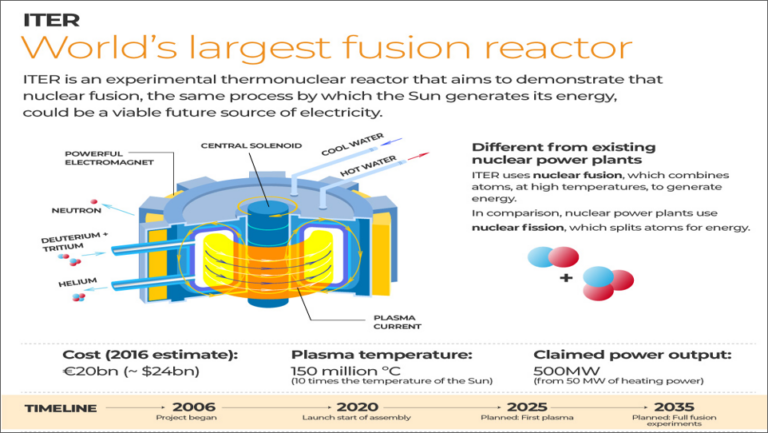
3 Spacecraft Heading to Mars
Hope Orbiter
- Hope was the first spacecraft to launch to Mars this summer, and the first Mars mission for the United Arab Emirates.
- The orbiter will observe Mars from space, forming a detailed picture of the planet’s atmosphere and its weather with a suite of imaging devices.
- A camera will capture high-resolution images of the planet. An infrared spectrometer will study dust, ice clouds, water vapor and temperature in the lower atmosphere.
- And an ultraviolet spectrometer will investigate carbon monoxide, hydrogen and oxygen in the upper atmosphere.
Tianwen-1
- China is sending an orbiter, lander and rover to Mars — the only mission this year to attempt a three-pronged exploration.
- After the spacecraft reaches Mars, the landing pod will detach from the orbiter and descend to the planet’s surface.
- The orbiter will remain in space and observe the planet using seven instruments.
- A parachute attached to the lander’s protective shell will slow the descent. Next, a set of struts will deploy midair.
- A thruster attached to the bottom of the lander will also help guide the vehicle to a softer landing.
- Once on the surface, a ramp will slide out so the rover can drive away. The rover has two sets of solar panel wings that will unfurl after landing.
Perseverance
- PLANNED FOR JULY 30
- The NASA mission includes Perseverance, a 2,200-pound rover, and Ingenuity, an experimental Mars helicopter.
- The Ingenuity helicopter weighs about four pounds, and will be the first to attempt powered flight on another planet.
- The Perseverance rover’s design is based on Curiosity, a successful NASA mission that landed on Mars in 2012.
- The plutonium power supply is designed to last more than a decade. The rover carries 19 cameras and a drill to extract core samples from rocks.
- Perseverance also uses a suspension system to drive over obstacles. The rover can turn a full 360 degrees in place, using six individually motorized aluminum wheels.
___________________________
